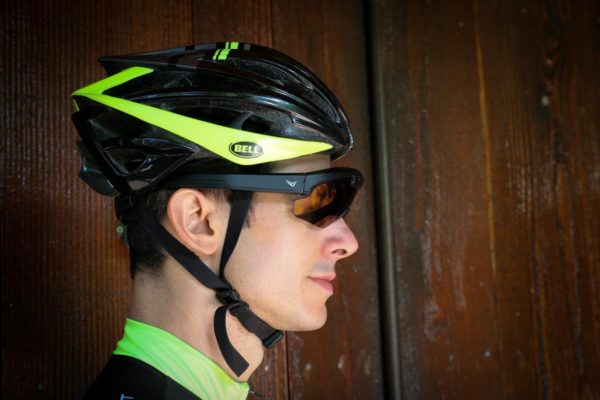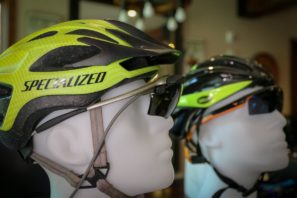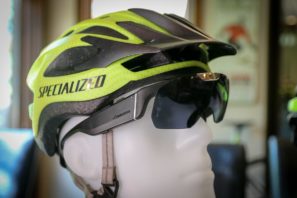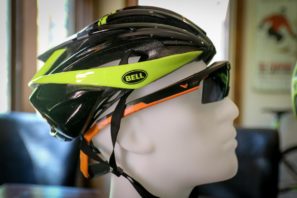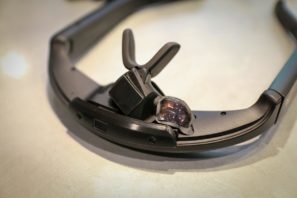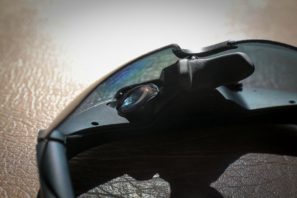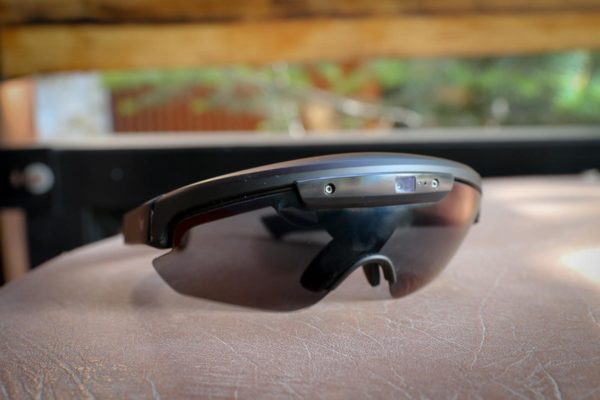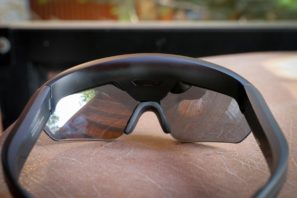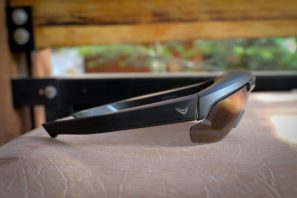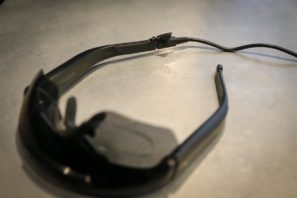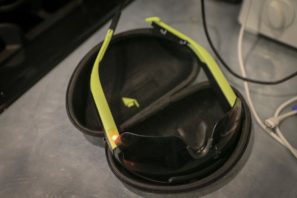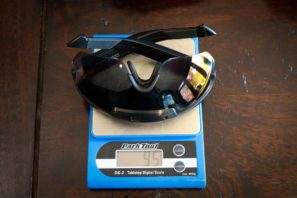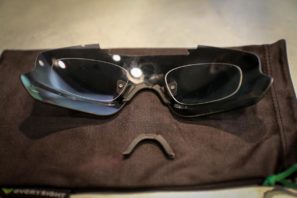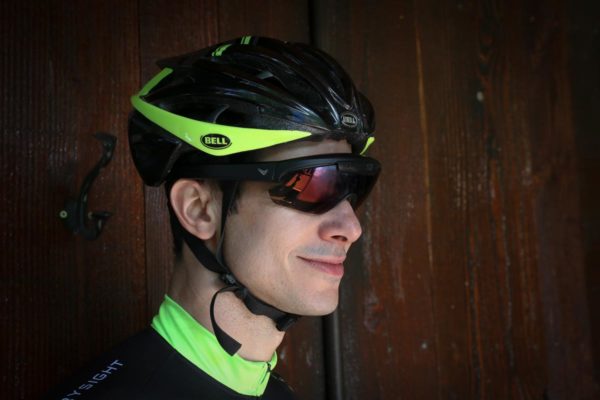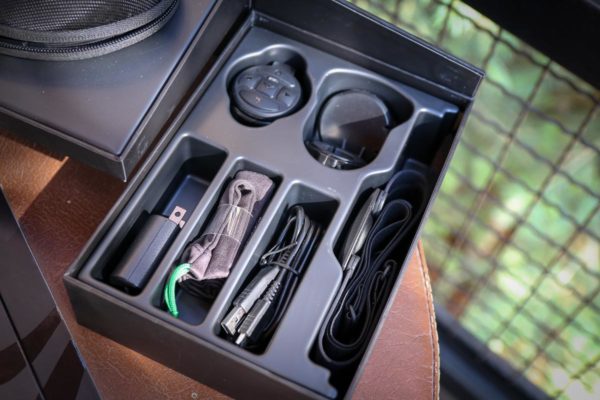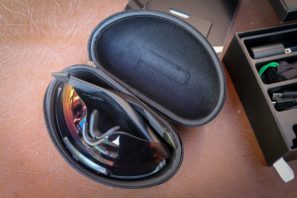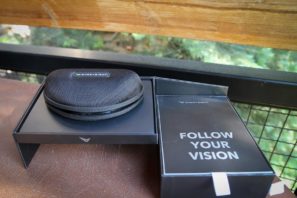In the information age, data is everywhere – including cycling. With sensors for just about everything you could think of, all that data is typically funneled into your cycling computer which resides on your bars, your stem, or perhaps your phone. Many of us are content to keep that information right there, hardly glancing at it during the ride – if at all. Others, whether for training or racing purposes, want to see all that data front and center as the ride unfolds. It’s this latter group that is probably the target audience of the Everysight Raptor, though it does have a few tricks up its sleeve for the rest of us…
If the Everysight name sounds familiar, that’s probably because they’ve been teasing the glasses now since late 2015 – and that’s just a fraction of the total development time. Everysight has been in development for the past 15 years, but the company’s experience with heads up displays goes back father than that with Elbit Systems being the largest defense company in Israel and the biggest provider of helmet mounted displays for air forces around the world. Somewhere around 2001, the company decided to create a consumer facing division as it saw a potential for AR (Augmented Reality) displays for uses like cycling.
Since those early days, the product has evolved from a wired clip on physical display to the see through floating BEAM OLED display used on the Beta release version of the Raptor. Fortunately, that means that the new system no longer has any wires and is close to resembling a normal pair of sunglasses.
The biggest advantage the Raptor has over the competition like the Recon Jet, is the unobstructed view out of the shield. Since the display is projected into the lens and back into your eye, there aren’t any physical objects that will obstruct your view. Using a “BEAM” display which is based on OLED technology, the display is right in front of your eye in a way that somehow makes it possible to focus both on the information and the road in front of you. Using the handlebar mounted control pod that is included with the glasses, you can fine tune the position of the display in your field of vision, but more importantly you can also adjust brightness or turn it completely off without touching the glasses. To me, this was one of the most important features since I really didn’t want to be riding around with display in front of me at all times – even though it turned out to be far less distracting than I thought it would be.
When you’re riding, the orange display will look something like the data fields shown on the video above. You can choose what is shown from simple data points to a map that shows your current and future route, to a sort of tachometer that you can follow for a set work out. If you have programmed heart rate or power numbers to reach, the needle will turn green when you’re in the right zone, or tell you to speed up or slow down accordingly. All of this information is available without ever taking your eyes off the road since you’re seeing the display and the road at the same time.
Better yet, all of this information is available to you without any additional sensors thanks to the built in accelerometer, gyroscope, magnetometer, barometer, proximity sensor, plus GPS and GLONASS. However, if you want to connect to external sensors, you can do that too thanks to ANT+, Bluetooth (2.0 and BLE 4.0), and wi-fi. Hardware specs include a Grilamid TR-90 frame with a quad-core CPU, 2GB SDRAM, and 16 or 32GB of internal storage all operating on Android OS. Additional features include a speaker (which can play music) and low noise microphone for video and voice control (or taking phone calls) as well as a multi-touch pad that can be used with or without gloves. Further control is offered through a companion app and the glasses are IP55 rated for dust and water resistance.
Impressive as the AR display was, I was more surprised by the quality of the video footage and photos. The video above is downgraded a bit through the facebook upload, but the raw footage I saw straight to Eyal’s phone left me impressed. It also provides a unique perspective since it’s as close as you’ll get to a “through your eyes” video, and the natural tendency to stabilize your head makes for less shaky video. Also, the ability to use voice control to quickly take a photo or a video suddenly opens the Raptor to more than just the data obsessed cyclist. However, for this to happen, Everysight will have to allow users to create videos with or without the data overlay above which currently isn’t an option (or at least allow it to be repositioned).
Fitted with a rechargeable battery in the temple, the Everysight Raptor is supposedly good for 7 hours of use thanks to the efficient optical display which uses little power even with high brightness and contrast. Weighing in at 95g, they’re also not super heavy. Everysight says that a clear lens and an RX adapter will be available as well.
While very close to production, the Raptors at Press Camp still had a pre-production nose piece which will help with the fit. The nose piece will be adjustable which is important to get the glasses to sit correctly since there are no other adjustments. The temples are a little bulky, so I could see a slight potential for fit issues with certain helmets, but overall the Raptors seemed pretty comfy. As Eyal demonstrates above, the glasses are fairly unobtrusive, though you can definitely tell that there is something different about the Raptors…
When available, the Raptors will ship in a slick box with a hard case, cleaning cloth, charging cable, and the handlebar remote as well as a heart rate strap for the bundled version. There will be a non bundled version, though the details aren’t finalized yet. The same can be said for pricing. Everysight says that the price will be announced soon – though don’t expect them to come cheap.

